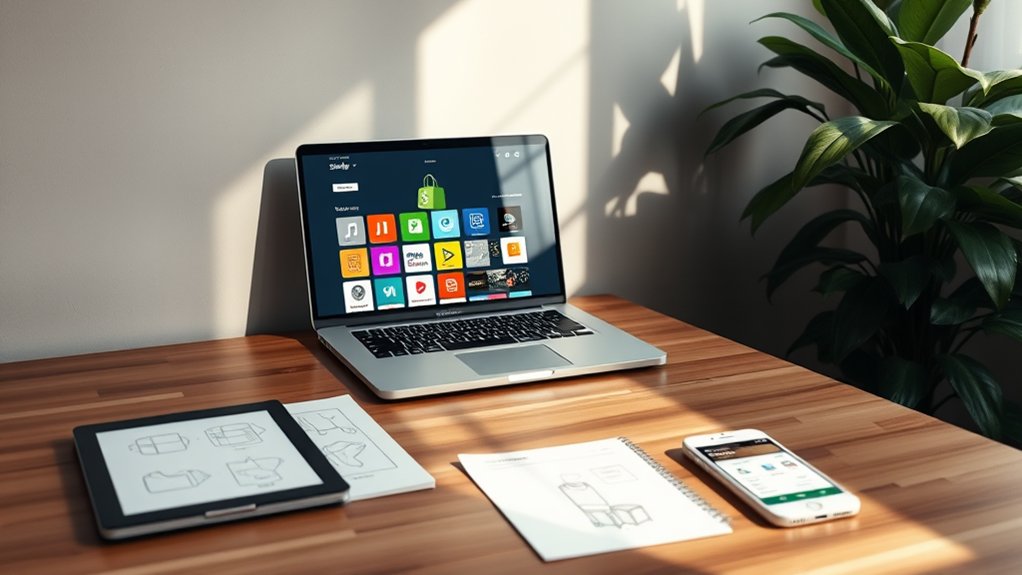Subscription retention emails are essential for keeping your subscribers engaged and loyal. Personalizing your messages based on subscriber behavior can greatly boost engagement, while a balanced email frequency keeps you relevant without overwhelming them. Use clear calls to action and tailor your content to rekindle interest among dormant subscribers. Highlight exclusive offers or recent features to capture their attention. Curious about successful real-life examples of retention emails? There’s more to explore to enhance your strategy!
Key Takeaways
- Personalize retention emails by using subscriber names and preferences to enhance engagement and relevance.
- Balance email frequency to avoid overwhelming subscribers while keeping them engaged with valuable content.
- Include clear calls to action (CTAs) to guide subscribers towards desired actions, improving interaction rates.
- Analyze subscriber behavior to tailor messaging and re-engage dormant subscribers effectively with targeted content.
- Utilize compelling subject lines and exclusive offers to capture attention and reignite interest in your brand.
Understanding the Importance of Subscription Retention Emails
While you might think attracting new subscribers is the key to success, retaining those subscribers is equally, if not more, important.
Understanding the importance of subscription retention emails can greatly impact your overall metrics. You need to focus on subscriber behavior to determine why people leave or stay. By analyzing patterns, you can tailor your approach and create targeted retention strategies.
These emails not only remind subscribers of the value you provide but also help to re-engage those who may have drifted away. Additionally, effective retention emails can improve your brand loyalty and reduce churn rates.
Key Elements of Effective Retention Emails
To craft effective retention emails, you need to focus on a few key elements that truly resonate with your subscribers.
First, personalize your messages; using their names and preferences can greatly boost engagement.
Next, pay attention to your email frequency. Too many emails can overwhelm subscribers, while too few can lead to disengagement. Striking the right balance is essential for maintaining interest.
Additionally, clear calls to action (CTAs) help guide your subscribers on what to do next, whether it’s updating their preferences or exploring new features.
Finally, keep an eye on retention metrics. Analyze open rates and click-through rates to refine your approach continually.
Strategies for Re-engaging Dormant Subscribers
Re-engaging dormant subscribers requires a strategic approach that addresses their unique needs and interests.
Start by analyzing past interactions to determine what content resonated with them. Then, tailor your messaging to rekindle their interest.
Consider adjusting your email frequency; if they’ve opted out of frequent updates, try sending fewer, more targeted emails. Use compelling subject lines and exclusive offers to capture their attention. A simple “We miss you!” email can go a long way.
Additionally, ask for feedback on what they’d like to see, creating a sense of involvement.
Finally, don’t forget to highlight any new features or products since their last engagement.
Personalization Techniques to Enhance Engagement
Personalization techniques can considerably enhance engagement by making subscribers feel valued and understood. By tailoring your emails to reflect user preferences, you not only boost open rates but also foster loyalty. Here are some effective strategies to take into account:
| Technique | Benefit |
|---|---|
| Personalized content | Increases relevance |
| Dynamic subject lines | Captures attention |
| Customized recommendations | Boosts engagement |
Using subscriber data, you can create personalized content that resonates with individual interests. For instance, segment your audience based on their past interactions, and send tailored messages that reflect their unique preferences. This approach guarantees that your emails are not just another item in their inbox but meaningful communication that encourages continued engagement.
Real-Life Examples of Successful Retention Emails
While many companies struggle with keeping subscribers engaged, successful retention emails can serve as a powerful tool to bridge that gap.
Real-world success stories show how tailored strategies can markedly improve email metrics. Here are a few examples to inspire your approach:
- Re-engagement campaigns: Target inactive subscribers with exclusive offers.
- Milestone emails: Celebrate subscriber anniversaries with personalized messages.
- Feedback requests: Ask for opinions to show you value their input and improve services.
- Content reminders: Send summaries of recent content they might’ve missed to reignite interest.
Frequently Asked Questions
How Often Should I Send Retention Emails?
You should aim for a balanced retention frequency. Sending emails too often can annoy subscribers, while too infrequent might lead to disengagement. Experiment with different email timings to find what resonates best with your audience.
What Metrics Should I Track for Retention Email Success?
Think of your retention emails like fishing lines; you need to monitor open rates and conversion rates to know what’s catching attention. Track these metrics closely, and you’ll reel in more loyal subscribers.
Can Retention Emails Be Automated?
Yes, you can automate retention emails effectively. By integrating retention strategies into your automated campaigns, you’ll guarantee consistent communication with subscribers, enhancing their experience and increasing the likelihood of them staying engaged with your service.
What Subject Lines Work Best for Retention Emails?
For retention emails, you’ll want engaging subject lines that grab attention. Personalizing your messages makes them feel special, increasing the chances recipients will open and connect with your content. Experiment to find what resonates best!
How Can I Segment My Audience for Better Targeting?
To segment your audience effectively, you can use demographic segmentation to identify age and location, while behavioral segmentation helps you analyze purchasing habits. Combining both strategies guarantees your targeting aligns with your audience’s preferences and needs.
Conclusion
In the world of subscriptions, it’s true what they say: “A stitch in time saves nine.” By investing in effective retention emails, you can keep your subscribers engaged and loyal. Remember the key elements and strategies we’ve discussed, and don’t underestimate the power of personalization. With these tactics, you’ll not only reduce churn but also foster a stronger relationship with your audience. Start crafting those emails today, and watch your retention rates soar!




